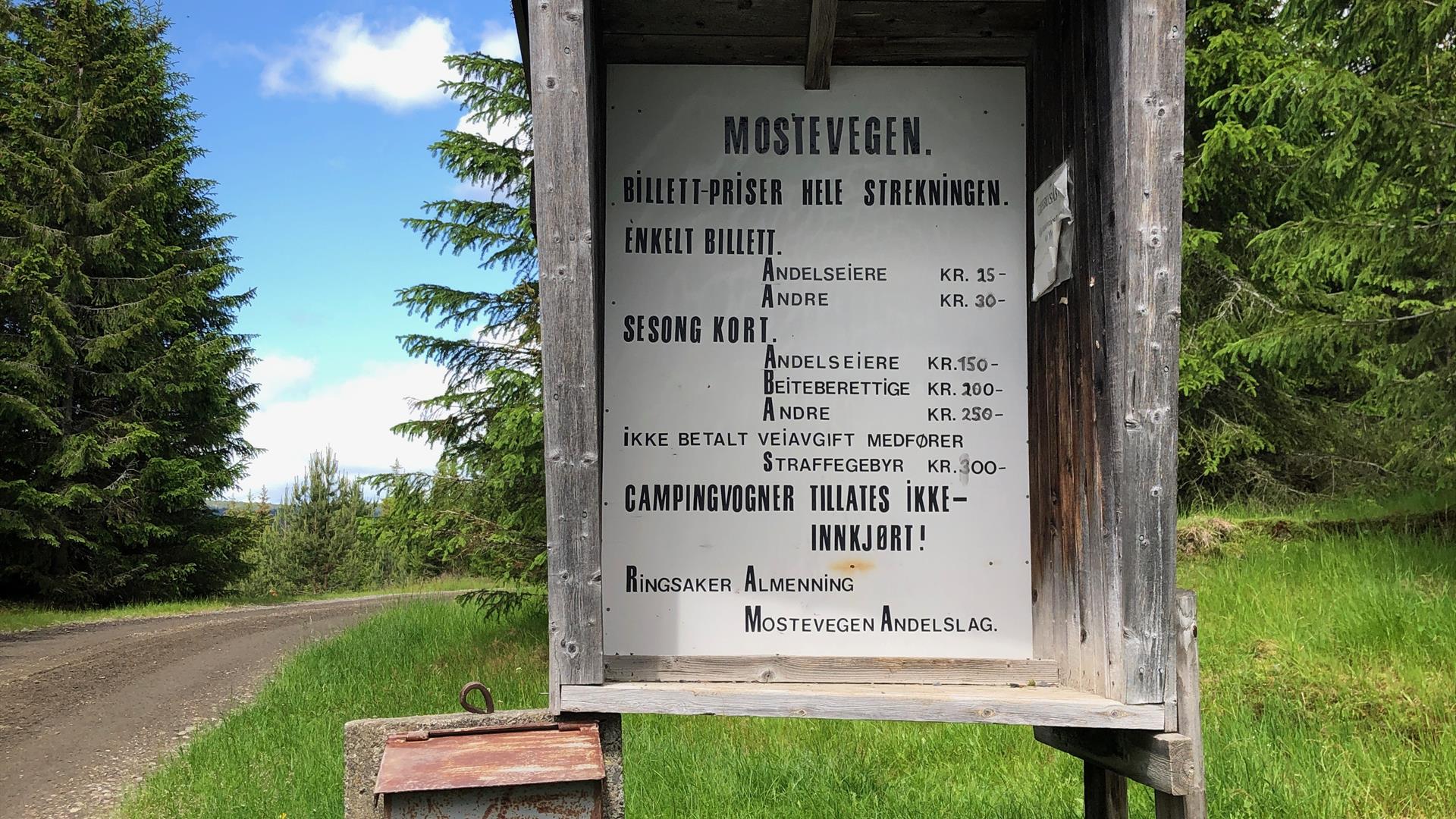About
"Moste mountain farm and Tjuv-Ola Distance: Mesnali round-trip: approx. 30 km Mostebakken round-trip: approx. 15 km Suitable for: If you are used to relatively long distances, the Mesnali round-trip is ideal. The easiest stretch is the return with plenty of downhill sections from Moste. Mostebakken is a shorter option, perfect for children and those not comfortable with long distances. The story about Tjuv-Ola adds extra excitement for the young. With Mesnali as starting point, follow the way-marked route towards Bergundhaugen. Ride through gentle terrain and turn left after some 7-8 km (Mesnabakken). Then climb the forest track up to Moste mountain farm, which may be slightly stony in places. River Finnøla close by offers excellent picnic opportunities. As you approach Moste, the landscape opens up and the farm is in an idyllic location by the road. Before you get that far, however, there is a sign on the right-hand side saying “Tjuv-Ola 1844” and nothing else. Let us look back and discover the story behind this sign before the final climb up to Moste. Tjuv-Ola and his gang – the outlaws of the Ringsaker mountain It was some band of bandits that almost 200 years ago wreaked havoc in the Ringsaker area and frightened dairymaids and other mountain folk out of their wits. Their ringleader was a man known as Tjuv-Ola, and they all lived in the forest below Moste farm, just above the Finnøla river ford-crossing. The thieves always carried rifles and knives, and they were feared by everyone. Anything they could find at the mountain farms close by and further into the mountain, they stole. If they came across food, they took it all – and they helped themselves to horses, sheep, cows, and calves. It was said that Tjuv-Ola ran the operation as a proper business and that he had a connection at Lillehammer buying any surplus of the “production” consisting of butter, cheese, beef, game, and fur. At the time, those on their way up to the mountain pastures with their animals often stopped for a rest at Moste farm. Once the gang hit and took all the belongings of the unsuspecting, sleeping travellers. Clothes were also stolen, and the outlaws did not necessarily look like thieves. The “chief” himself often appeared as a well-dressed gentleman as he robbed farms and charmed dairymaids and other womenfolk. Elegant and polite One summer, an elegant man in the most beautiful clothes came to visit a dairymaid at Gjesbuaasen. When inside, he introduced himself as one of the sons at the farm Stor-Gaalaas in Furnes. He asked if he could rest and have a bite to eat before he continued his journey. Although he was both polite and friendly, the dairymaid was not fooled. She knew exactly who he was. Keeping her calm, she told him that there had been an elegant and friendly man visiting last summer as well but that he turned out to be Tjuv-Ola himself in disguise! The polite, well-dressed man looked startled, stammered his goodbyes, took to his heels, and disappeared from the farm. In late summer, two maids from neighbouring farms were visiting the very same dairymaid. It was dark outside, the window was ajar, and the door was locked. As they sat in front of the fireplace talking, they suddenly heard the window creaking and saw a large hand grabbing hold of the windowsill. The two visitors jumped up and screamed, but the quick-witted hostess grabbed a log and whacked the large hand. Loud swearing and rummaging could be heard from outside the window, and then it went quiet. The terrified visitors did not dare go home until the morning after, and they remembered this experience for a long as they lived. Body discovered by dairymaid In the end, Tjuv-Ola had to give up the ghost like everyone else. He died in the winter of 1844, and his gang's final undertaking was to drag his body to the side of the road and place it under a large spruce. Kari, a dairymaid at Hersoug, was the first to discover the body when she, in spring, went up the mountain with her livestock. He had probably been there for months and was a horrific sight for Kari and her fellow travellers. The poor-law authorities were notified, and Tjuv-Ola was buried at Veldre cemetery. It is still possible to see the remains of Tjuv-Ola’s cave, but it is not signposted and slightly difficult to find. However, if you take the first left towards Finnøla on your return, the cave is believed to be up to the left by the ford. A cave hunt with the children is both fun and a bit scary. If you cannot find the cave, then stop and listen carefully. It is said that the echo of Tjuv-Ola and his gang can still be heard in the distance… Source: Årbok 1980, Ringsaker Historielag Kommunedelplan for kulturminner og kulturmiljø, Ringsaker Kommune Text: Åse Kari Gravråk"
Facilities
Age limit
- adult oriented
Distance
- length in km - 15 / 30 km
Duration
- 2 hours
- 4 hours
Grading
- easy
Nature and terrain
- asphalt
- gravel
- major pathway
- mountainous terrain
- small path
Season
- June - October
Sports activities
- not illuminated trail
.png)
.png)




















